10 reasons why 3D configuration custom shirts can boost apparel businesses
Product customization is a big trend for online businesses out there. It empowers customers to make their own decisions and increases brand reputation and loyalty. It´s a win-win situation for companies and clients. A personalized customer experience is pivotal for eCommerce businesses to stand out, especially if you work in retail, the most competitive of them all.
Providing custom shirts is a simple and easy way to stay ahead of the curve. 3D configuration will make the process smooth and hyper-customizable.
1# Customers get to do it themselves
In a world where there are 12-14 million eCommerce businesses, it´s difficult to stay ahead of the curve. Custom shirts designed in a 3D configurator introduce a great level of engagement.
The shopper is involved in the process from the begging and can “try” out distinctive designs. All this brings a certain gamification into the buying process which is also great for website engagement.
2# What you see is what you get
3D configurators have great precision. Clients can experience their custom shirts almost the same way they would in a store.
That´s right!
3D configuration allows 360 views of the product, shoppers can zoom in and out, rotate it, and, with Augmented Reality they can actually try it on. Customers can get a true “feel” of the product, and see if it fits their skin tone or their eye color.
The normal website custom shirt can be misleading, with 3D configuration, what you see is what you get.
3# Works with all sorts of shirts and all sorts of clients
Everyone is different. Each apparel brand has its own niche target audience but with custom shirts, companies will be able to broaden their market spectrum.
No need to have specific buyer personas with certain characteristics. Shirt customization can help eCommerce businesses that work in retail to reach all age groups using their own resources. From custom embroidered shirts to personalized polo shirts, 3D configuration works with all sorts of garments and all sorts of brands.
A baseball clothing company could do it but so could a luxury shirt brand.
4# Customers can customize more than color and fit
Most businesses that allow customization have a certain limit to what one may add. Usually, shoppers can stamp a picture of some kind to be printed onto the shirt or maybe change the size and color.
3D configuration allows for unprecedented customization. There’s no limit to what apparel companies can provide. Besides color, material, and size, businesses can add special features like accessories or embroideries and lettering. Club Brugge did it with their sports shirts and the outcome is really impressive.
5# 3D configuration is prone to fewer mistakes
Expivi’s 3D configuration platform, in particular, enables clients to configure products and automatically see the price associated with the chosen features (color, material, size) at the same time a Bill of Materials is generated and sent to production.
This improves the overall customer experience since they are able to have access to the price in real-time and it minimizes production errors because the manufacturers will have access to the complete list of materials necessary for production.
6# For brands is a great way of reducing inventory
Even in retail, traditional manufacturing involves complex logistics operations. Storage and inventory are a nightmare for companies and take a real tol on their budgets. Together with providing and maintaining transportation and infrastructures, the manufacturing costs go through the roof.
Customization means manufacturing on demand. By enabling shirt personalization and customization, for example, businesses will significantly reduce logistics costs, as the need for the storage, insurance, marketing, and distribution of readymade products is severely reduced.
On demand production virtually eliminates the need to store a large number of materials and goods. Instead of guessing what consumer wants and stockpiling inventory, brands can meet the demand directly because orders are only made when requested. So, besides reducing inventory, it minimizes the need to forecast new product volumes or meet minimum order requirements.

7# Custom shirts are less likely to be returned
A little fact: at least 30% of all products ordered online are returned. It’s a very high number, particularly when compared to 8.89% in stores. With a 3D configuration platform, what you see is what you get.
Customization empowers customers in their buying journey. They can create something that is unique to them and matches their desires. 3D configuration and Augmented Reality helps shoppers make more informed decisions when it comes to purchases since they can view a more accurate representation of it.
3D configurators make shirt personalization and customization possible, and clients are less likely to return something they created themselves than something that was built for the masses.
8# It´s differentiating for both brands and clients
On-demand or make-to-order products can maximize customer value. Deloitte found that customers are willing to pay up to 20% more for personalized products. It’s the future of online retail.
In the US, 71% of customers expect personalization, with 76% frustrated when this doesn’t happen, McKinsey discovered.
The impact of getting customization right is incredible, with those that do, growing 40% faster than those who don’t.
Customers who are able to customize products buy more. This is good for both parts of the equation. Brands will be able to charge more for their products at the same time they sell more, and clients will be happier with their unique purchases. When engaged in selecting colors or adding features, users experience greater engagement, which, more often than not, translates into a purchase.
3D configuration provides that extra zing that brands need to stay ahead of the competition whilst enabling their clients to feel unique as well.
9# Tackling personalized gifting
Personalized gifting can be a good way of upscaling apparel businesses. It’s a matter of introducing simple tech, like a 3D configurator, and re-utilizing resources companies already have.
It’s also good for the customer who can hand on create a gift which is ideal for someone. Custom shirts significantly enhance the emotional connection toward a product, and make the perfect personalized gift.
Upscaling eCommerce businesses that work in fashion doesn’t have to be a three-headed monster.
10# Customization with 3D configuration is better for the environment
84 % of clothing ends up in landfills or incinerators.
In New York City alone, more than 400 million pounds of clothes are wasted each year.
These are astoundingly scary numbers.
By providing shirt customization with 3D configuration, you’ll be tackling these issues.
In traditional retail, the amount of products manufactured is determined by an estimate of consumer demand. That estimate is highly susceptible to errors, creating the possibility of supply surpassing demand.
This means companies usually produce more than they sell, generating waste that also constitutes a hazard to the environment.
There is zero chance of supply ever surpassing demand in the manufacturing make-to-order model, as supply is only ever created on demand. Customization is part of that model. This way, businesses will only create what is ordered, so it’s a no-waste solution.
Also, in the same way, consumers are less likely to return products they customized themselves, they are also less likely to throw them away. Why? Because they have an ‘emotional’ connection to them. It’s something made by them, just for them.
All of this contributes to a more sustainable future. The fashion industry needs to change, and something as simple as custom shirts made by a 3D configurator can be the perfect first step into a greener industry.
Did you like this article on custom shirts? Then read all about why you should be selling customized products!











